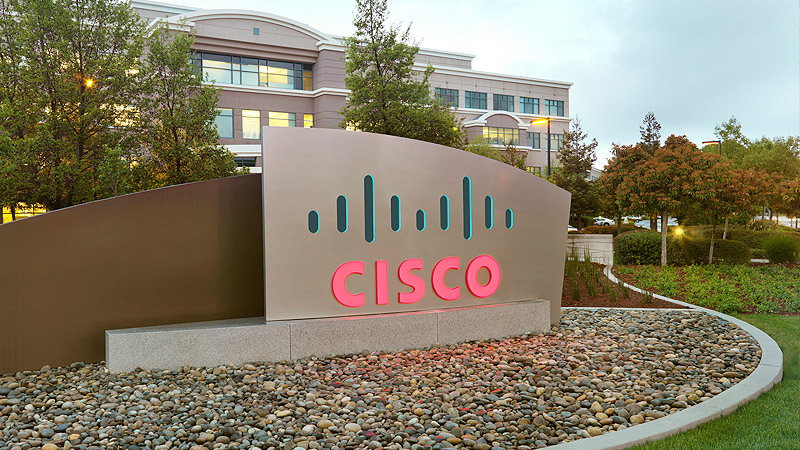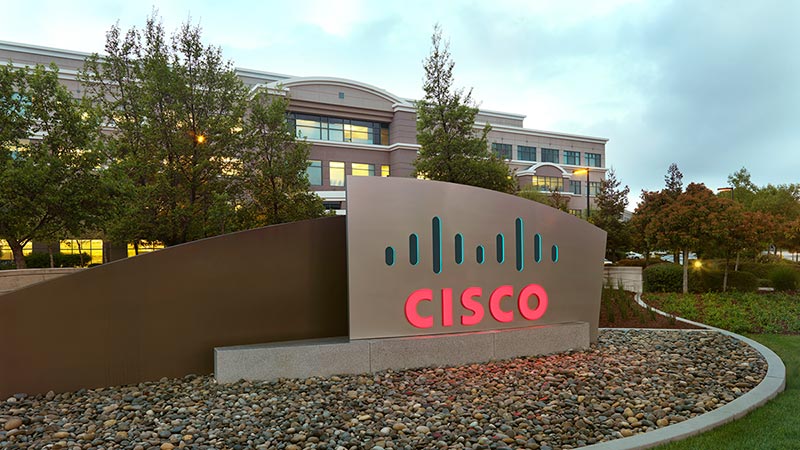LONDON, UK., September 30, 2002 - Cisco Systems today announced the results of a European-wide survey, undertaken by IDC, a leading provider of IT research and advice, on the adoption of Internet and Mobile Technology Solutions by Western European Small to Medium-Sized Businesses (SMBs). The survey, entitled 'Fastrackers 02', shows that, on average, SMBs achieved a 22 percent increase in profitability as a result of adopting Internet technology solutions. Much of the increase can be attributed to SMB use of mobility access technologies and enabling devices and solutions, such as mobile phones, laptops and wireless LANs, which enable SMBs to remotely obtain secure, high-speed Internet connections to their corporate networks.
IDC's findings demonstrate that enhanced productivity is the greatest driver for the uptake in Internet and mobile solutions. SMBs have produced competitive advantage through faster time to market and timely customer service.
Results from the study show Internet "Enthusiasts", the group characterised as SMBs which have a basic Internet infrastructure in place with some applications integrated with the Web, account for the highest uptake in Internet and mobile solutions. Mobile sales force automation (SFA) and customer support are cited as the most prevalent mobile applications employed.
The percentage of "Fastrackers", the group of SMBs that have built a strong Internet infrastructure and have enterprise applications bundled with the Web, has increased over the last 12 months and even the more IT-basic SMBs increasingly understand the value that the Internet can bring to their business. This is evident in the 26.1 percent of companies, the Enthusiast cluster, that demonstrate strong intentions towards investing in these areas in 2002 and 2003.
In addition, IT decision-making has moved up the value chain to the board-level, indicating an increased awareness amongst SMBs of the business benefits IT can deliver.
"The research demonstrates an increased strategic understanding of the Internet at the board level, signifying greater appreciation of the value that new solutions bring," said Andrew Walton, Business Analyst Consulting at IDC.
The prevailing insecurity in the economy has, however, resulted in a certain group of SMBs adopting a "wait and see" attitude. This group of SMBs, known as Internet "Sensitives", has been strongly affected by the hype surrounding the e-economy, and are reducing budgets dedicated to Internet technologies, although Web based spending will still amount to approximately 18 percent of overall IT budgets.
"The past year has been challenging for European SMBs, but despite this there has been great acceptance and uptake of Internet and mobility solutions," said John Mason, VP of Commercial Segment EMEA of Cisco Systems. "As the report demonstrates, greater efficiency has been a key driver in this uptake and is expected to further fuel the demand for the Mobile Internet in the next 12 months."
"SMBs which embrace Internet and mobility technologies can benefit from a huge competitive advantage in a highly crowded marketplace," continued Mason. "Internet and mobile solutions can make a real difference to the SMB bottom line as they can keep costs low, productivity high and increase customer satisfaction, as can be seen in the results of the qualitative research."
There are many socio-economic factors that will effect the speed with which new solutions will be adopted, such as legislation, the performance of the global economy and the uptake of broadband technologies. The research shows that companies across Europe are adopting or planning to adopt enabling mobility technologies: 85 percent of SMBs are adopting or planning to adopt remote access, followed by IP VPNs at 70 percent and Wireless LAN technologies at 42 percent.
IDC has surveyed 1236 SMBs in the 20 to 499-employee size class. Conducted between May and June 2002, countries surveyed included France, Germany, Italy, The Netherlands, and the UK. The report, Fastrackers '02, is the third in a series commissioned by Cisco Systems and conducted by IDC, which looks at the evolution of European SMBs in relation to ebusiness technology uptake.
About Cisco Systems
Cisco Systems, Inc.(NASDAQ: CSCO) is the worldwide leader in networking for the Internet. Cisco news and information are available at http://www.cisco.com. Cisco equipment in Europe is supplied by Cisco Systems International BV, a wholly owned subsidiary of Cisco Systems, Inc.Cisco, Cisco IOS, Cisco Systems, the Cisco Systems logo are registered trademarks of Cisco Systems, Inc. and/or its affiliates in the U.S. and other countries. All other trademarks mentioned in this document are the property of their respective owners.
Notes to Editors
The Fastracker '02 study is the third in a series commissioned by Cisco and is based on the analysis of IDC's European Vertical Markets 2002 survey investigating the extent to which SMBs are utilising Internet technology and mobility applications in their business processes. The development of the research programmes evolved in relation to the uptake of technology amongst SMBs, with the focus of the first wave on the prevalence of ecommerce solutions, followed by a change of focus to the adoption of ebusiness solutions in the second wave.
As with the Fastracker '00 and '01 studies, IDC has identified four specific clusters of companies by their use of, and spending intention towards, Internet technology. These clusters are identified as follows:
- Internet Fastrackers
- Internet Enthusiasts
- Internet Sensitives
- Internet Laggards
Internet Fastrackers
Fastrackers are SMBs that have built a strong Internet infrastructure and have enterprise applications bundled to the Web. Activities carried out over the Web are also more sophisticated as they have moved from merely content-based towards including support and transaction functions, although online payment remains uncommon. Web spending is above average and is expected to remain above average as these companies adopt more complex business models.
Internet Enthusiasts
Enthusiasts have a basic Internet infrastructure with few (or no) applications integrated with the Web. Their Web sites predominantly provide information on products and services while advanced features such as transaction capabilities are still not available. However, this group of SMBs has plans to strengthen its investments in Web technologies and provide existing applications with Web interfaces within 2002 and 2003. A combination of business pressures from the value chain, the need to cut costs and streamline business processes, as well as the increasing need for customer-centric strategies are pushing these companies to integrate enterprise applications to achieve full-scale benefits. Moving from a relatively under-developed Internet infrastructure, this set of companies is expected to show the highest shift in technologies' penetration, including wireless technologies.
Internet Sensitives
Internet sensitives have a basic Internet infrastructure. Despite strong commitment to Web spending in 2001, this set of companies is going to lower its percentage of IT spending dedicated to the Web and has few plans to adopt a web interface for its enterprise applications. However, Web related spending will still account for approximately 18% of overall IT budgets. After a first 'Internet enthusiasm' at the beginning of 2001, this group of SMBs has been strongly impacted by the uncertainty in the economy and the end of the hype surrounding the E-economy. Overall these SMBs have adopted a 'wait and see' approach and strong investments are not to be expected in the near future in Internet technologies.
Internet Laggards
Internet laggards show a basic Internet infrastructure and rather undeveloped Web strategies. The Web is mainly used for information purposes and few or no enterprise applications already have a Web interface. Despite gradually moving towards more advanced Web strategies, this set of companies is not expected to fully understand the benefits coming from new technologies and adoption rates are expected to remain rather low. The percentage of the IT operating budget both for 2001 and 2002 are far below average. However, this percentage is set to increase.






